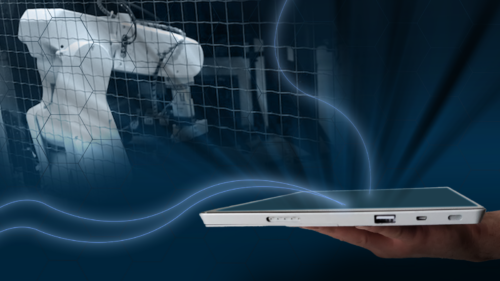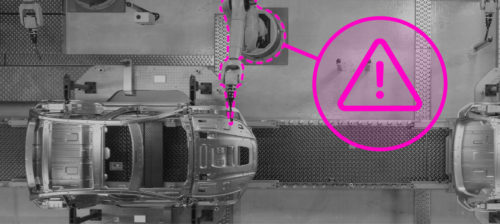Energy audits, monitoring drive data toward a solution
With more than one-third of the energy used in the United States consumed by the industrial sector, manufacturing facilities constantly seek new ways to reduce energy costs without compromising production. According to the U.S. Department of Energy, implementing plant-wide energy audit recommendations can reduce a plant’s annual energy costs by 10% to 15%.
With more than one-third of the energy used in the United States consumed by the industrial sector, manufacturing facilities constantly seek new ways to reduce energy costs without compromising production. According to the U.S. Department of Energy, implementing plant-wide energy audit recommendations can reduce a plant’s annual energy costs by 10% to 15%.
Through an energy audit, manufacturers can evaluate their facilities for energy use and potential conservation strategies. Based on what they learn, they may recommend lighting retrofits, infrared scanning of heavy equipment, advanced metering or an enterprise energy management system. An EEMS providing manufacturers with the details of their daily energy usage.
The roles of an EEMS include:
-
Charting energy usage
-
Determining specific processes that are not energy-efficient
-
Evaluating the impact of critical load-shedding activities in real-time
-
Monitoring all utility services, including electricity, gas, water and steam
-
Identifying poor performers by benchmarking energy levels at multiple facilities
-
Comparing energy usage by day, week, month or year
-
Scheduling energy data collections to occur automatically.
-
Manufacturers can identify the benefits of predictive maintenance, energy efficiency and cost reduction. Plant operators require accurate, real-time feedback to evaluate the performance of pumps, compressors, heaters, chillers, conveyors and other electrically-powered equipment. If a particular load increases more than normal, equipment might be deteriorating or developing problems prematurely.
( Photo courtesy of E-Mon) For example, one facility manager noticed unusual data in the form of rapidly sequential electrical load changes. The facility’s HVAC equipment was short-cycling (cycling off and on too frequently) due to a loss of coolant in the system. Warned by the abnormal data, he was able to repair the equipment before it had a chance to break down and cause unnecessary downtime and an even more costly headache.
Technical components
The technical components of an EEMS include interval data recorders, advanced meters and energy intelligence software. Each element helps managers learn when, where and how energy is used. By analyzing the data, an operator might learn that a piece of equipment is not being shut down at the end of a shift as planned. Unnecessary equipment might be running during peak hours when electricity rates are higher. The solution might be as easy as shifting specific equipment usage to non-peak hours.
Interval data recorders track and record energy consumption. IDRs send information to an in-house computer or a secure Website to allow manufacturers to analyze the information in real time. Users track total load within a facility to benchmark usage patterns and manage ‘out-of-tolerance’ energy use at individual points.
Advanced meters are installed to measure actual electric, gas and water use behind the main utility meter. They are instrumental in managing utility costs and determining the drivers of excess use. They can be used to measure kWh consumption, kW demand (with peak date and time), real-time kW load, amps-per-phase, volts-per-phase and power factor. The demand reading shows the highest peak demand and the date and time the peak occurred based on a time period consistent with the local utility’s billing tariff. This is ideal for applications where kW peak demand charges become an issue.
Installing advanced meters does not require an interruption of service. Meters can be installed with split-core current sensors around the conductors of the circuit being monitored. This allows the sensors to be placed on virtually any load in the building, providing constant data on energy consumption.
Multiple meter unit enclosures provide metering for each piece of equipment with minimum installation space required. Available IDRs supply load profiles for each circuit monitored. ( Photo courtesy of E-Mon) The technical features of an EEMS include:
-
0-2 V output current sensors allow safe and accurate remote mounting of current sensors up to 2,000 feet from the meter without power interruption
-
Up to three sets of current sensors can be installed in parallel for cumulative readings
-
Meters can be used on 3-phase, 4-wire; 3-phase, 3-wire; and 2-phase, 3-wire configurations.
-
Energy intelligence software allows plant managers to monitor energy consumption easily and effectively. The software generates energy usage graphs and profiles for demand analysis and power reduction consideration in selectable time interval sampling rates. It also generates itemized electrical bills for departmental allocation and usage verification. Another useful function is determination of the coincidental peak demand date and time for multiple facilities or loads. The software can read meters either onsite or off-site via cellular or telephone modem and/or remote computers.
A plant’s energy management system — also known as a building management system — uses multiple methods to control energy usage. Its controls can be selected to manage HVAC, lighting or equipment — or used to control all three. With the data obtained from the EEMS, the energy management system can be tuned to a facility’s requirements. Advanced meters can often be directly connected to the energy management system to
Individual circuit disconnects can be readily metered at their location. The energy management system can be tuned to a facility’s requirements. ( Photo courtesy of E-Mon) optimize control of the energy use.
EEMS examples
A food manufacturer processed one of its more popular snack brands out of a single building within a large manufacturing complex. Each tenant paid for energy based on an estimated percentage of complex-wide energy usage. The snack food facility manager suspected that his operation’s portion of the energy bill was too high and decided he needed a better way to allocate true energy usage costs.
After installing advanced meters and analyzing the data, the manager’s learned that the actual energy use was less than the amount for which the product line was billed. The result was a reduction in his electric bill from an 11% of the overall facility electricity bill to 7%. That was a 36% reduction in energy costs. For a relatively small investment in advanced metering equipment and software, the snack food line was able to save thousands of dollars per month in energy costs. The investment paid for itself within 60 days.
In another example, a manufacturing facility shared a location with a sister division, splitting the energy bill. One of the divisions was experiencing unusually high energy costs compared to other corporate facilities that manufactured the same products with similar equipment. Consequently, the corporate office made preliminary plans to shut down the division and move the manufacturing operation to a facility located in another area of the country that had lower tariffs for electrical power.
In an attempt to solve the problem without having to move the business elsewhere, managers installed advanced meters to separate the energy usage of the two divisions and an IDR to measure usage of specific equipment and processes.
Managers found that the division paying for 60% of the electricity bill was actually using less than 41% of the complex’s total energy. The IDR also showed that a heat-treating process used once a week was causing a 175 kW spike in energy usage. The division worked with the corporate accounting department to re-allocate its percentage of the energy bill and moved its heat-treating process to a day when overall demand was not as high. The division saved $2,100 per month just by eliminating the spike in electricity usage for the heat-treating process. As a result, the division reduced its energy allocation by $324,000 per year and the plant closure was cancelled.
Additional identifiers of energy inefficiencies
Lighting is the largest use of electricity in most commercial buildings. For manufacturers, it is a necessity for the production process and safety. While the process of retrofitting a facility’s lighting system involves an up-front investment to purchase newer, more efficient lamps, the amount of energy saved can provide a return on investment quickly — typically from 1 to 5 years.
Infrared scanning of heavy machinery can locate hot spots that cause energy drains and unnecessary stress on equipment. Some insurance companies offer discounts for regular equipment scans because they are viewed as a preventive safety and cost-saving measure. The savings are based on lower energy costs and avoiding the frequent replacement of expensive, sometimes custom-built machinery.
Many facilities are charged penalties for poor power factor. A portion of the delivered energy is wasted through heat and magnetizing effects. If power factor in a facilities electrical system is less than 90%, it is considered poor, and can bindicate larger power-quality problems . Power factor can be corrected. However, it must be quantified first.
Energy efficiency starts with detailed knowledge of a facility’s energy use. Begin by setting priorities, creating an action plan and getting corporate buy-in. Next, determine the goal for implementing an EEMS, whether it is for energy conservation, cost savings or reducing power-factor penalties. Schedule an energy audit with energy management professionals to discuss how an EEMS can meet your needs. Finally, request a cost-benefit analysis and an estimated date for your return on investment for each recommendation.
Author Information David Bovankovich is the assistant vice-president of product design for E-Mon, LLC. He has more than 20 years of electrical engineering, facility management, design and metering expertise. As a utility industry liaison, Bovankovich participated in the U.S. Energy Association’s Energy Efficiency Forum.
-
Do you have experience and expertise with the topics mentioned in this content? You should consider contributing to our CFE Media editorial team and getting the recognition you and your company deserve. Click here to start this process.





